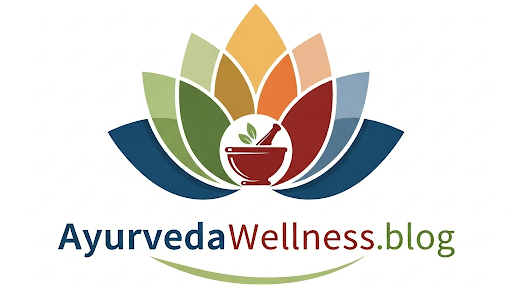Do you feel it? That subtle shift in the air, a certain crispness that wasn’t there a few weeks ago? The leaves on some trees are beginning to whisper of change, and the days, though still warm, are just a little shorter. This is a magical time of transition, as the fiery, expansive energy of summer begins to give way to the cooler, drier, and more mobile energy of autumn.
In Ayurveda, this period is considered one of the most important to navigate with intention. As we move from the heat of Pitta season into the airy, Vata-dominant months, our bodies need a gentle hand to guide them. If we don’t adjust, the natural qualities of Vata—light, dry, rough, mobile—can begin to accumulate and lead to imbalances like dry skin, joint stiffness, anxiety, and digestive issues.
Think of it this way: after the hot, moist summer, our bodies are holding onto a lot of accumulated heat. Then, suddenly, the air becomes cool and dry. This clash of energies can create instability, but with a little wisdom, we can turn this transition into an opportunity for deep nourishment and grounding.
Here is a simple Ayurvedic guide to help you transition gracefully into autumn:
1. Nourish with Warmth (Dietary Shifts)
The key is to think “warm, moist, and grounding.” As the weather cools, it’s time to reduce your intake of cold, dry foods.
- Favor Warm, Cooked Foods: Trade your cold salads and iced drinks for warm soups, nourishing stews, and roasted root vegetables like sweet potatoes, carrots, and beets. These are inherently grounding and easy to digest.
- Embrace Healthy Fats: This is the season to befriend healthy fats. Add a spoonful of ghee (clarified butter) to your meals, and incorporate avocados, nuts, and seeds into your diet. These moistening foods help counteract Vata’s dry quality.
- Sip on Spiced Teas: Warming spices like ginger, cinnamon, and cardamom are your best friends. They help to kindle your digestive fire (Agni) and warm your body from the inside out. A cup of ginger tea in the afternoon is a beautiful ritual.
- Prioritize Regularity: The mobile nature of Vata can disrupt digestion. Try to eat your meals at the same time each day to create a rhythm that your body can rely on.
2. Find Your Anchor (Lifestyle Adjustments)
Just as the wind blows fastest when there’s nothing to hold it down, Vata energy can feel scattered and anxious without a routine.
- Establish a Consistent Routine (Dinacharya): Wake up, eat, and go to bed at roughly the same time each day. This simple act of consistency provides a sense of stability and security that a Vata-dominant system craves.
- Practice Self-Massage (Abhyanga): The dry, rough qualities of Vata can affect your skin and joints. A warm oil massage with sesame oil is a wonderfully grounding and nourishing ritual. Take a few minutes before your shower to gently massage your body, focusing on your joints and your belly in clockwise circles.
- Embrace Gentle Movement: While strenuous, high-impact exercise can aggravate Vata, gentle movement is incredibly beneficial. Focus on grounding practices like yoga (especially gentle flows), Tai Chi, or a slow walk in nature.
- Cultivate Calm: The mental energy of Vata can be overactive. Dedicate a few minutes each day to meditation, deep breathing exercises, or simply sitting in a quiet space to find stillness.
By consciously making these small, gentle shifts, you can turn the transition into autumn into a time of deep nourishment and self-care. It’s about honoring the wisdom within you that knows how to dance gracefully with the changing seasons, ensuring you feel grounded, calm, and vibrant all year long.


